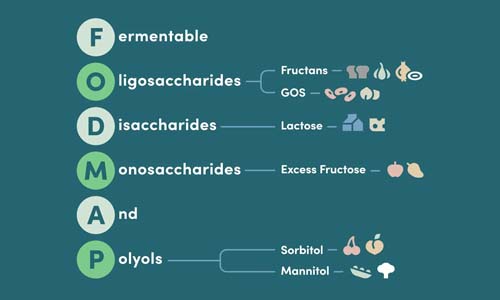Grass Fed Bone Broth: The Ultimate Guide for 2025

Key Takeaways
- Grass fed bone broth offers a rich, savory flavor and supports easier digestion.
- It is beneficial to avoid high FODMAP ingredients like onions and garlic when making bone broth for sensitive stomachs.
- This guide explains what distinguishes grass fed bone broth from other types.
- Choosing quality grass fed sources is essential for the best bone broth experience.
- The selection of the right aromatics can significantly improve digestibility for those with sensitive stomachs.
Table of Contents
- What Is Grass Fed Bone Broth?
- Nutritional Benefits of Grass Fed Bone Broth
- Grass Fed vs. Grain Fed Bone Broth, What Sets Them Apart?
- Sourcing & Quality, Why It Matters for Grass Fed Bone Broth
- How Grass Fed Bone Broth is Made, Step-by-Step
- Flavor Variations and Gourmet Enhancements
- Grass Fed Bone Broth, Real-World Uses & Serving Scenarios
- Grass Fed Bone Broth Brands, Comparing Your Options
- Where to Buy & How to Store Grass Fed Bone Broth
- The Future of Grass Fed Bone Broth
The Ultimate Guide to Grass Fed Bone Broth
Grass fed bone broth delivers rich, savory depth while supporting easier digestion, especially when crafted without high FODMAP ingredients like onions or garlic. This comprehensive guide explores what sets grass fed options apart, how to choose quality sources, and why the right aromatics make all the difference for sensitive stomachs.
If you're curious about the broader landscape of bone broths, you might enjoy this overview of the best bone broth options available today.
For those managing digestive sensitivities, grass fed bone broth becomes especially valuable when traditional onion and garlic are replaced with low FODMAP alternatives. Gourmend Foods uses chive sprigs, scallion greens, and leek tops to deliver that savory, onion-like depth without triggering IBS symptoms. The result? Gourmet flavor that supports rather than challenges your digestive wellness.
Nutritional Benefits of Grass Fed Bone Broth
Each cup of quality grass fed bone broth provides approximately 6-12 grams of protein, primarily from collagen and gelatin. Key amino acids include glycine, proline, and glutamine, compounds that support gut lining integrity and may reduce bloating. Essential minerals like calcium, magnesium, and phosphorus leach from bones during the long simmer.
The gelatin content specifically benefits digestive comfort by supporting the mucosal barrier in your intestinal tract. Many Gourmend customers report feeling more satisfied and experiencing less digestive discomfort when incorporating bone broth into their daily routine, particularly as a warming morning beverage or between-meal nourishment.
Beyond gut health, the collagen supports joint mobility and skin hydration, while the amino acid profile may enhance immune function. A typical serving of 8-12 ounces provides these benefits without overwhelming your system, perfect for daily incorporation into a low FODMAP lifestyle.
Grass Fed vs. Grain Fed Bone Broth, What Sets Them Apart?

Grass fed bone broth contains higher levels of omega-3 fatty acids and conjugated linoleic acid (CLA) compared to grain-fed alternatives. The flavor profile tends to be cleaner and more robust, without the sometimes muddy undertones found in conventional broths. This nutritional advantage stems from cattle grazing on diverse pasture plants rather than grain-heavy feedlot diets.
Environmental benefits extend beyond nutrition. Regenerative grazing practices used by grass fed operations improve soil health, increase biodiversity, and sequester carbon. For environmentally conscious consumers, choosing grass fed supports farming methods that heal rather than deplete the land.
| Criteria | Grass Fed Bone Broth | Grain Fed/Conventional Broth |
|---|---|---|
| Omega-3 Content | Higher | Lower |
| Environmental Impact | Positive (regenerative) | Higher land use, less biodiversity |
| FODMAP-Friendly | Yes (with right aromatics) | Often contains onion/garlic |
| Flavor Profile | Rich, savory, clean | Can be flat or fatty |
Sourcing & Quality, Why It Matters for Grass Fed Bone Broth
Authentic grass fed bone broth requires bones from cattle that are "100% grass fed and finished", meaning they never consumed grain, even in their final months. Look for transparent sourcing information and traceable farm partnerships. Red flags include vague terms like "grass fed" without the "finished" qualifier, or lack of sourcing details entirely.
Regenerative and ethical standards matter beyond the nutritional profile. These practices ensure animals live stress-free lives on biodiverse pastures, which translates to cleaner, more nutrient-dense bones. Gourmend prioritizes transparency in sourcing, working with farms that practice regenerative grazing and maintain high animal welfare standards.
The environmental scorecard heavily favors grass fed operations: improved soil health, increased carbon sequestration, and enhanced biodiversity versus conventional feedlot systems. When you choose quality grass fed sources, you're supporting farming practices that regenerate ecosystems rather than depleting them.
How Grass Fed Bone Broth is Made, Step-by-Step
Creating exceptional grass fed bone broth at home requires just three key ingredients: 3-4 pounds of mixed grass fed beef bones (knuckle and marrow bones work best), fresh chive sprigs, and green leek tops. Skip the traditional onions and garlic entirely, these low FODMAP aromatics deliver superior depth without digestive distress. Add 2 tablespoons of apple cider vinegar to help extract maximum minerals from the bones.
The foundation lies in bone selection. Knuckle bones provide gelatin for that signature gel when cooled, while marrow bones contribute rich flavor and healthy fats. Shank bones offer the best of both worlds. Roast bones at 400°F for 20 minutes before simmering to develop deeper, more complex flavors that rival any restaurant-quality broth.
Simmering technique determines success. Maintain water at barely bubbling (180-200°F) for 18-24 hours on stovetop, or use a slow cooker on low for 24 hours. Pressure cookers reduce time to 3 hours but produce different texture. Skim foam and excess fat within the first 30 minutes, then every few hours to maintain clarity.
Common issues have simple fixes: cloudy broth results from boiling too vigorously, while lack of gel indicates insufficient knuckle bones or cooking time. Strain through fine mesh for professional clarity. The finished broth should coat a spoon and gel firmly when refrigerated, hallmarks of properly extracted collagen.
Pro Tip
For maximum umami without high FODMAP ingredients, add a strip of nori seaweed and dried oyster mushrooms during the final 4 hours of simmering. This technique mirrors Gourmend's approach to building complex, savory depth.
Flavor Variations and Gourmet Enhancements

Transform basic grass fed bone broth into gourmet liquid gold using low FODMAP aromatics. Fresh thyme, parsley stems, and bay leaves infuse herbal complexity, while nori seaweed and dried shiitake mushrooms add umami richness. Black peppercorns and lemon peel brighten the final product without triggering sensitivities.
Layer flavors strategically during the cooking process. Add hardy herbs like thyme and bay leaves in the first hour, reserve delicate chive sprigs and scallion greens for the final two hours. This timing preserves volatile compounds that create restaurant-quality depth. A splash of apple cider vinegar not only extracts minerals but adds subtle brightness.
Advanced techniques include creating compound flavor bases: bundle herbs with kitchen twine for easy removal, or create garlic-chive oil by gently heating chive stems in neutral oil. These preparations concentrate flavor without the digestive challenges of traditional aromatics, proving that dietary restrictions need never compromise culinary excellence.
Grass Fed Bone Broth, Real-World Uses & Serving Scenarios
Start mornings with 8-12 ounces of warmed grass fed bone broth instead of coffee for sustained energy without caffeine crashes. This ritual provides protein, minerals, and digestive support to begin your day. Mid-afternoon servings work as satisfying snacks that curb hunger while nourishing rather than depleting your system.
In cooking applications, substitute broth for water when preparing quinoa, rice, or other grains for enhanced flavor and nutrition. Use as the base for soups, stews, and sauces, or reduce it by half to create concentrated flavor enhancers. For entertaining, serve in small cups as elegant appetizers or warming beverages during cold weather gatherings.
Storage maximizes convenience: cool quickly and refrigerate in glass jars for up to 5 days, or freeze in ice cube trays for portion-controlled flavor additions. Label with preparation dates for food safety, and always reheat gently to preserve delicate nutrients and maintain smooth texture.
| Use Case | Serving Size | Best Time | Benefits |
|---|---|---|---|
| Morning beverage | 8-12 oz | Upon waking | Sustained energy, digestive support |
| Cooking base | 2-4 cups | Meal prep | Enhanced flavor, added nutrition |
| Between-meal snack | 6-8 oz | Afternoon | Satiety, nutrient density |
| Entertaining | 4-6 oz | Social gatherings | Elegant, warming, conversation starter |
Grass Fed Bone Broth Brands, Comparing Your Options
Quality grass fed bone broth requires careful brand evaluation based on sourcing transparency, FODMAP compatibility, and flavor innovation. Look for 100% grass fed and finished sourcing, clear ingredient lists, and packaging that preserves nutrients. The absence of onions and garlic makes products suitable for sensitive digestion while maintaining gourmet appeal.
Gourmend Foods excels through innovative aromatics that replace traditional high FODMAP ingredients without sacrificing flavor. If you're interested in how beef broth compares or want to learn more about its unique qualities, check out this guide on beef broth.
Where to Buy & How to Store Grass Fed Bone Broth

Direct ordering from Gourmend Foods ensures freshness and authenticity while offering subscription savings up to 15% with free shipping on orders over $75. Our customers appreciate the convenience of doorstep delivery combined with the assurance of rigorous quality control from production to packaging.
Store unopened shelf-stable cartons in a cool, dry pantry for up to 18 months. Once opened, refrigerate immediately and consume within 5 days for optimal flavor and safety. For extended storage, freeze opened portions in ice cube trays, these "flavor blocks" dissolve perfectly into soups and sauces without waste.
Pro Storage Tip: Label containers with opening dates and freeze in single-serving portions. Thaw overnight in the refrigerator or heat gently on the stovetop, never microwave from frozen as this can create hot spots that destroy delicate proteins.
The Future of Grass Fed Bone Broth
The grass fed bone broth market continues evolving toward greater transparency and consumer education. For a deeper dive into the health aspects and scientific research behind bone broth, see this overview from the Canadian Digestive Health Foundation: is bone broth healthy?
For those interested in dietary approaches, you might also want to explore the potential benefits of a bone broth diet as part of your wellness routine.
To learn more about the nutritional science of bone broth, review this peer-reviewed article on the composition and health effects of bone broth.
Frequently Asked Questions
What are the key nutritional benefits of grass fed bone broth compared to grain fed bone broth?
Grass fed bone broth typically contains higher levels of omega-3 fatty acids and conjugated linoleic acid (CLA), which support anti-inflammatory benefits and joint health more effectively than grain fed options. It also provides rich collagen, gelatin, and essential minerals that contribute to gut comfort and overall wellness.
How can I make grass fed bone broth more digestible for sensitive stomachs or those following a low FODMAP diet?
To enhance digestibility, avoid high FODMAP aromatics like onions and garlic, substituting them with low FODMAP alternatives such as chive sprigs, scallion greens, or leek tops. These ingredients deliver savory depth without triggering digestive discomfort, making the broth gentler on sensitive stomachs.
Why is sourcing quality grass fed bones important for making the best bone broth?
Quality grass fed bones ensure a richer nutrient profile, including higher omega-3s and CLA, which contribute to the broth’s healthful properties and flavor. Sourcing from trusted grass fed animals also supports ethical farming practices and results in a cleaner, more wholesome broth experience.
What environmental advantages do grass fed bone broth products offer over conventional grain fed options?
Grass fed bone broth supports more sustainable farming by promoting pasture-based animal raising, which can improve soil health and reduce reliance on grain crops. This approach often leads to lower environmental impact and better animal welfare compared to conventional grain fed systems.





